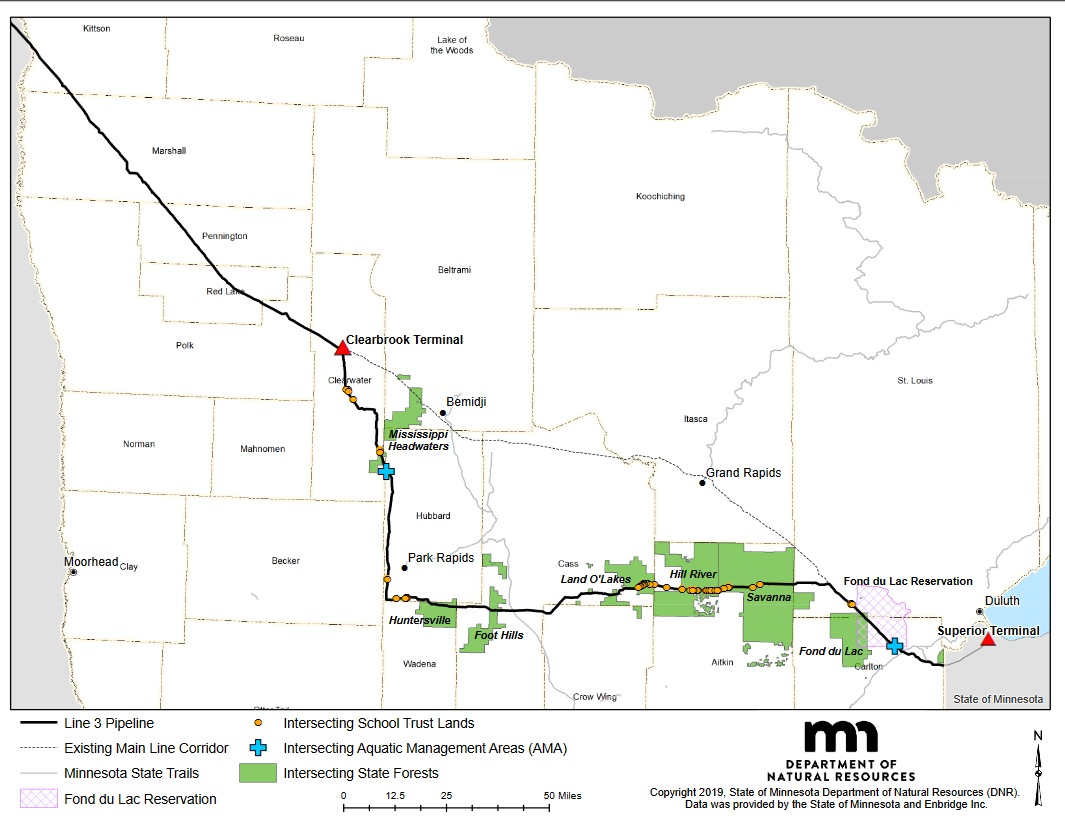
PUC’s new mascot?
Image courtesy of Public Domain Pictures.
This article by Scott Russell first appeared on Healing Minnesota Stories. Reposted with permission.
If the Minnesota Public Utilities Commission (PUC) were to have a mascot it would be the ostrich, its head buried in the sand.
The PUC approved permits for the deeply flawed Enbridge Line 3 tar sands pipeline in 2018. Line 3 would run 340 miles through northern Minnesota, burrowing under the Mississippi headwaters, cutting through state forests, and crossing more than 75 miles of wetlands and more than 200 water bodies.
The PUC ignored Line 3’s climate damage — more severe storms, drought and other impacts — estimated at $287 billion worldwide over three decades. It ignored treaty rights, choosing instead to side with Enbridge’s interpretation of Constitutional law. It ignored experts at the Minnesota Department of Commerce, who said Enbridge had failed to prove the pipeline was needed. It ignored the increased risk of Missing and Murdered Indigenous Women, a risk that would have received serious attention had it affected more affluent communities. It undervalued Line 3’s spill risks to our clean water and wild rice.
According to its own documents, Enbridge openly admits it can’t build Line 3 and meet all of Minnesota’s water quality standards, “given northern Minnesota’s topography and environment (e.g., avoiding wetlands).”
Line 3 opponents filed three major challenges with the Minnesota Court of Appeals. The first case challenged Line 3’s environmental impact statement. Last fall, the Minnesota Court of Appeals found the statement inadequate because it failed to consider the impacts of a spill in the Lake Superior Watershed. That seems like a major oversight the PUC should have caught. The state has now patched up the environmental impact statement and the project is going back to the PUC for approval.
And now the stage is set for an encore performance of the PUC’s “Ignore the Risk.”
The Office of Administrative Hearings will take in-person public comments on Line 3’s revised environmental impact statement in Duluth, Thursday, Dec. 19 at the Radisson Hotel Duluth-Harborview, 505 W. Superior Street, Duluth. It will have two sessions, 1-4 p.m. and 6-9 p.m. (To find out if a meeting is canceled due to bad weather or other call 1-855-731-6208 or 651-201-2213.)
The PUC also will accept written public comments to the following questions:
- Is the revised FEIS adequate?
- In light of the revised FEIS, what action should the Commission take on the application for a certificate of need for the Line 3 Replacement Project?
- In light of the revised FEIS, what action should the Commission take on the application for a pipeline routing permit for the Line 3 Replacement Project?
The initial comment period closing Friday, Jan. 6 at 4:30 p.m.
The reply comment period closes Monday, Jan. 16 at 4:30 p.m.
Submit written comments through mn.gov/puc, select the Comment on the main menu to connect to the public comment page.
The PUC will take these comments into consideration when reconsidering it’s Line 3 votes on a Route Permit and Certificate of Need.
Don’t hold your breath for a PUC change of heart.
Media belly flops on this story
Here’s the early media slant on the state’s new environmental impact statement: Line 3 is moving forward and construction could start in six months.
Here are some headlines.
- MPR: Fresh Line 3 review: ‘Unlikely’ any spilled oil would reach Lake Superior.
- Star Tribune: No major impacts on Lake Superior found from Line 3 pipeline.
- Reuters: Enbridge says Minnesota concludes no additional risk to lake from pipeline.
The coverage has dismissed or minimized those offering a different narrative. It also fails to remind readers that the Minnesota Court of Appeals has yet to rule on the two other major challenges to Enbridge Line 3. The project also needs water quality permits from the Minnesota Pollution Control Agency. Any one of these three could stop the project in its tracks.
Significantly, all three headlines buy a false premise that the Minnesota Court of Appeals was only concerned about whether a Line 3 spill would eventually reach Lake Superior. The Court’s ruling expressed a much broader concern. According to the June 3 opinion, the Court found Line 3’s environmental impact statement “inadequate because it does not address the potential impact of an oil spill into the Lake Superior watershed” as it was required to do. The watershed is more than Lake Superior; it includes all of the lakes, rivers and wetlands that feed into Lake Superior.
The MPR story doesn’t acknowledge opposing views until the story’s 12th paragraph. It quotes Andy Pearson of MN350 saying the new environmental impact statement shows that “a spill into Little Otter Creek could travel 20 miles in just 24 hours and send over 500,000 gallons of tar sands crude in the direction of Lake Superior.”
The Star Tribune story doesn’t offer a voice for opposing views until its story’s last two paragraphs:
Climate change activists said the updated review didn’t go far enough.
“The PUC has produced yet another inadequate review that fails to recognize that this pipeline would pose an unacceptable risk to Minnesota’s clean water and should never be built,” said Margaret Levin, director of the Sierra Club’s Minnesota chapter. “Now it’s more important than ever that Governor (Tim) Walz and the Pollution Control Agency do everything in their power to stop this dirty tar sands pipeline once and for all.”
The Star Tribune reprinted this ludicrous summary of the new environmental impact statement without questioning it:
The report said some oil might float down the St. Louis River to a dam where it would mix with the turbulent water. It said the most significant environmental impact would be potential short-term effects on fish right below the dam due to toxic components in the oil. But past the dam, it said, any oil remaining on the surface after 24 hours would likely wash up on shore without reaching Lake Superior.
Comment: What would residents say if crude oil spilled in Lake Minnetonka just above Gray’s Bay and it started killing fish? Exactly. Yet the environmental impact statement and the Star Tribune story seem to minimize such a spill on the St. Louis River by saying something to the effect of, “Well, it’s not getting to Lake Superior, so no big problem.”
Other pipelines in the news
Also check out:
